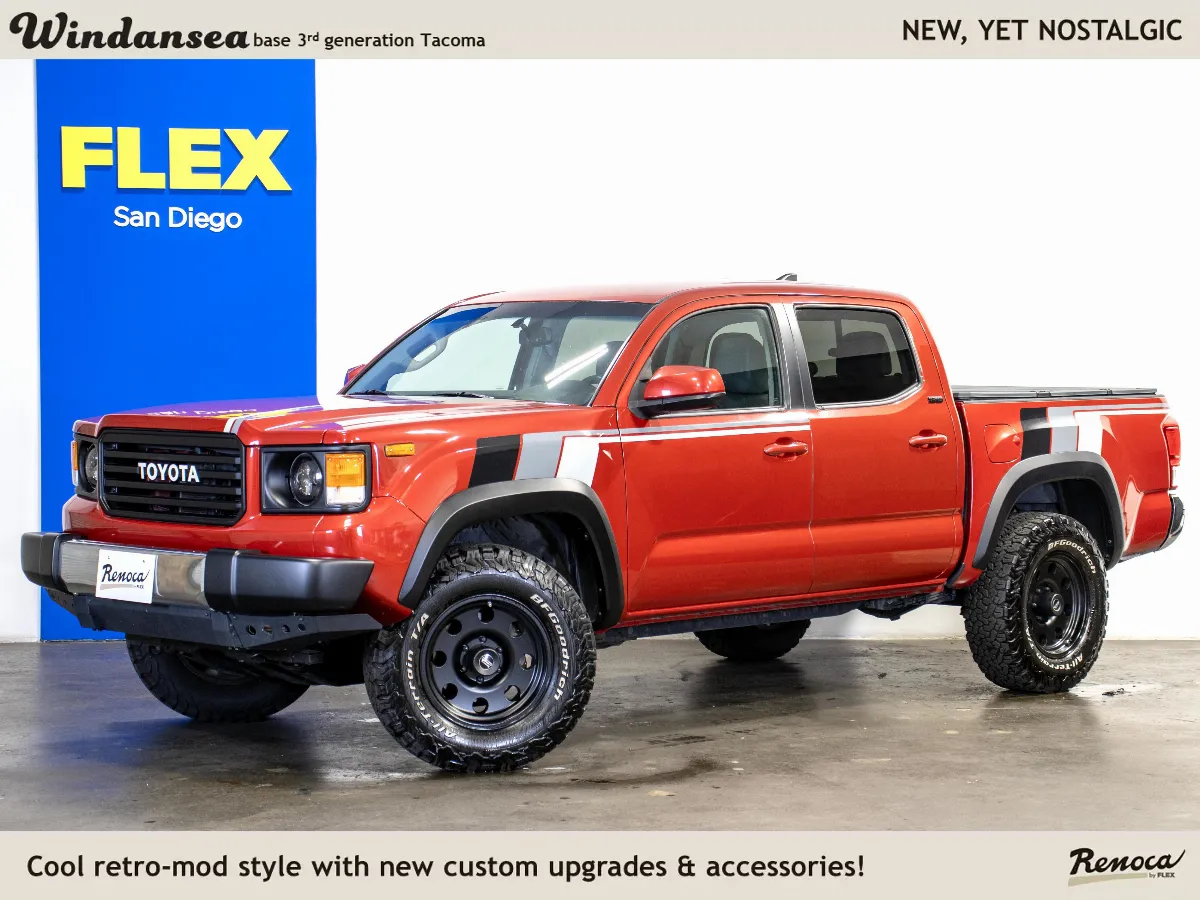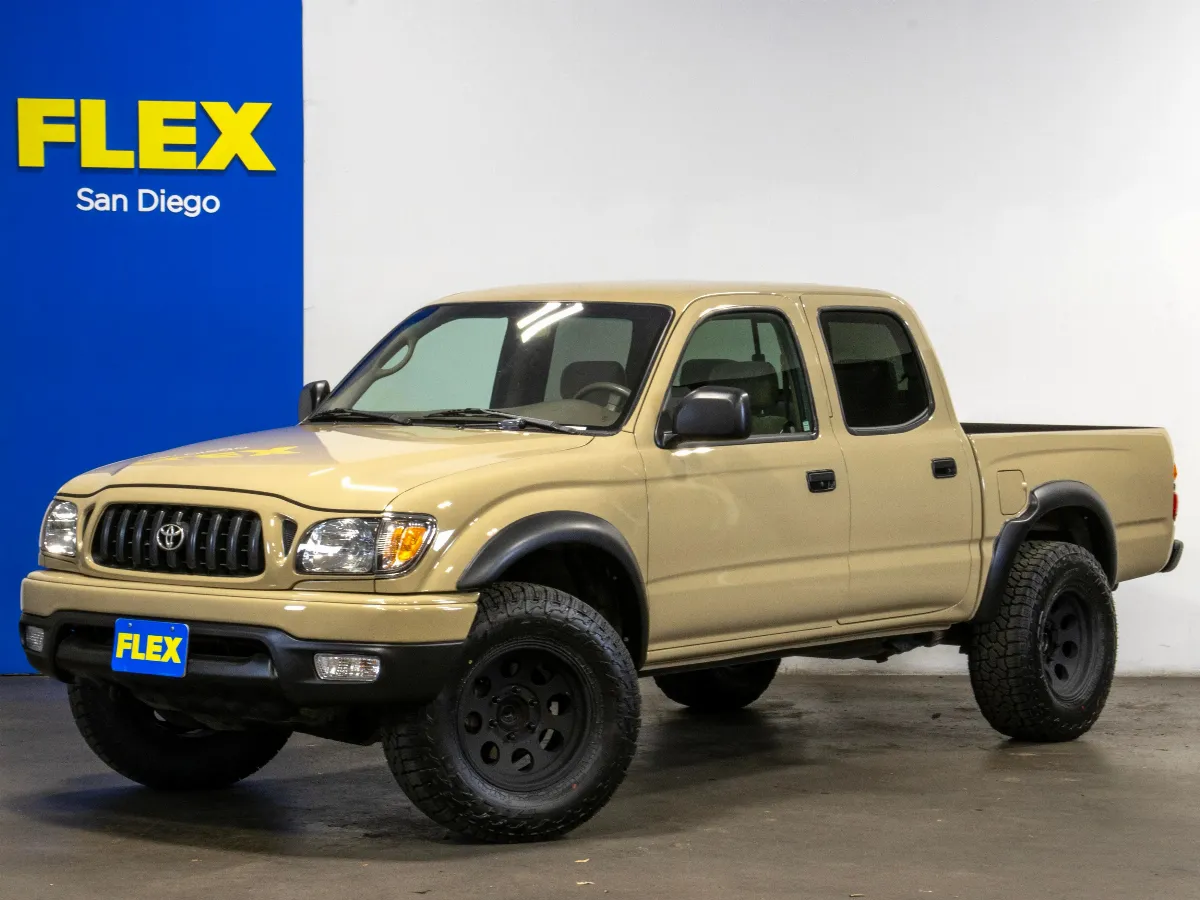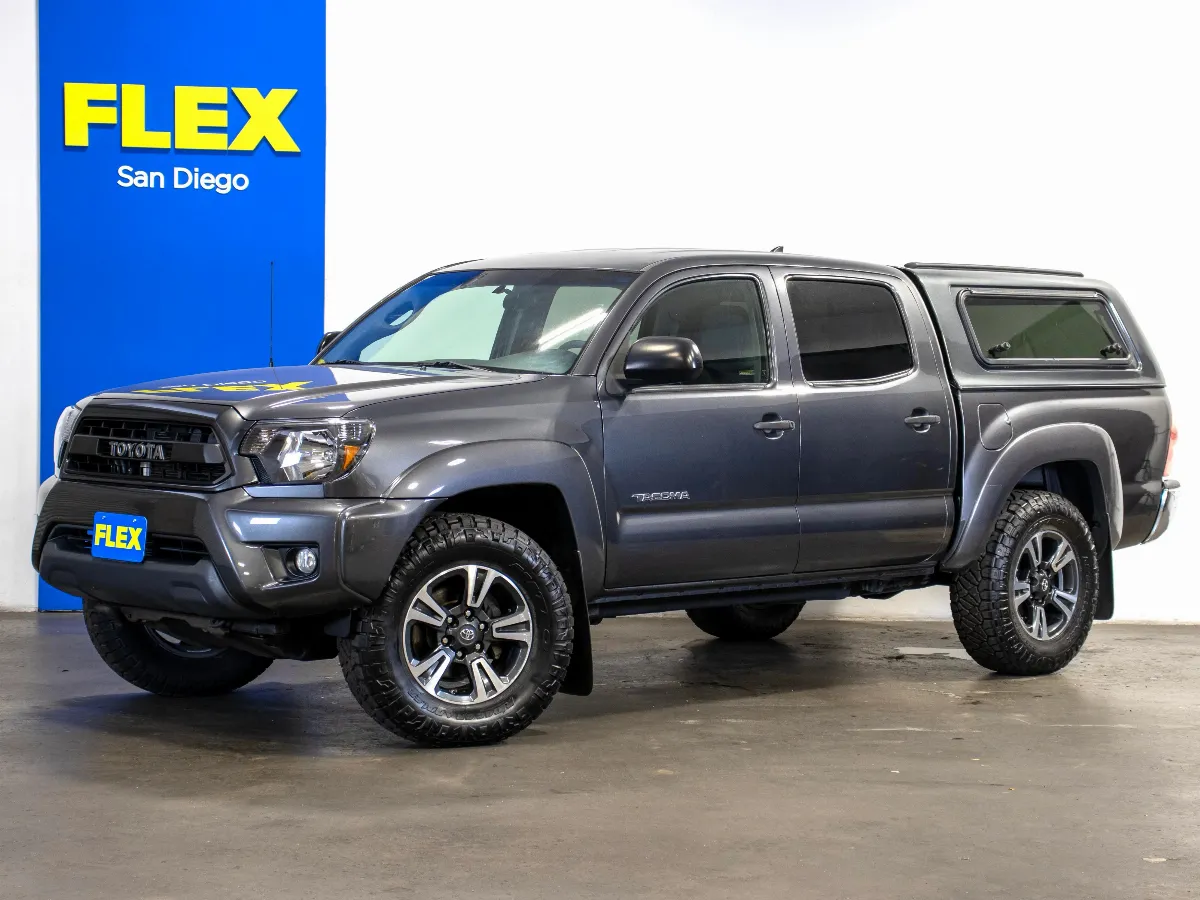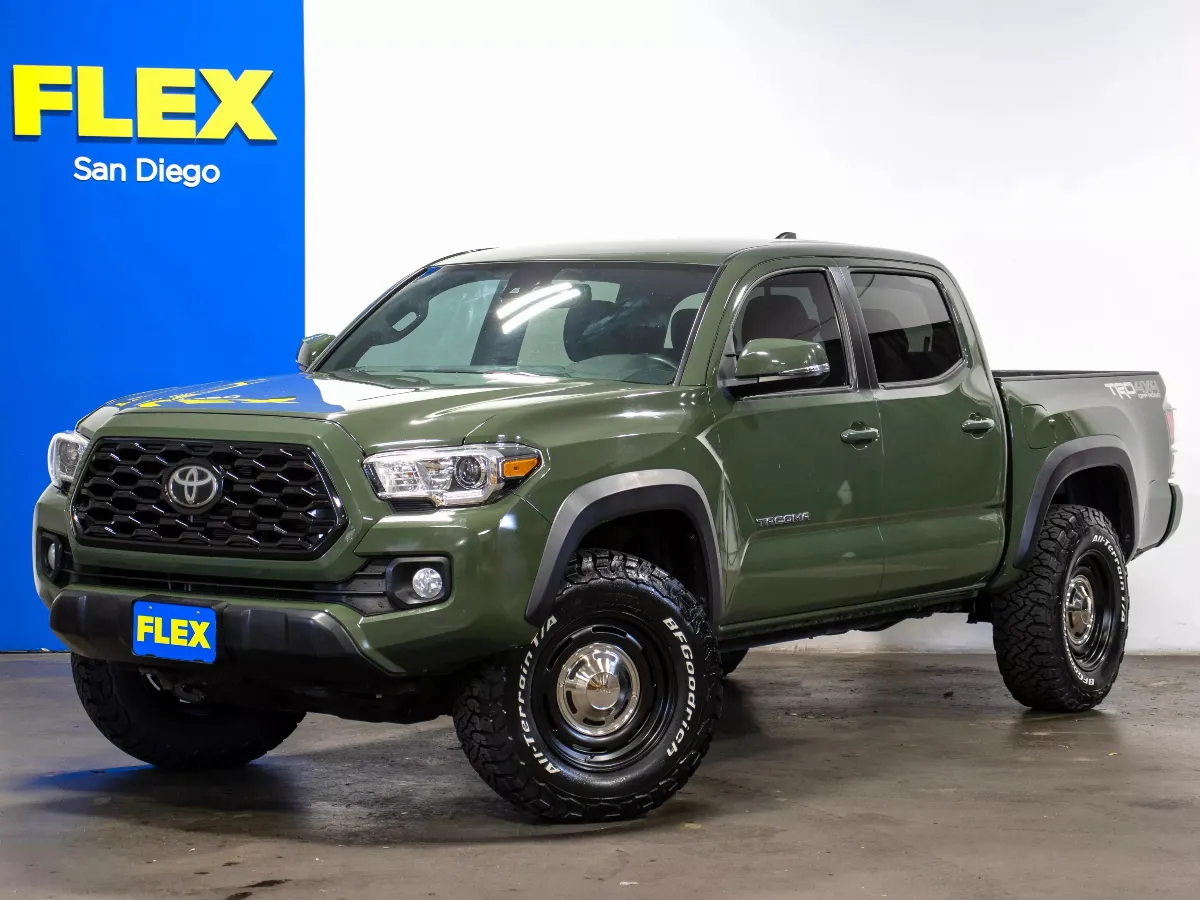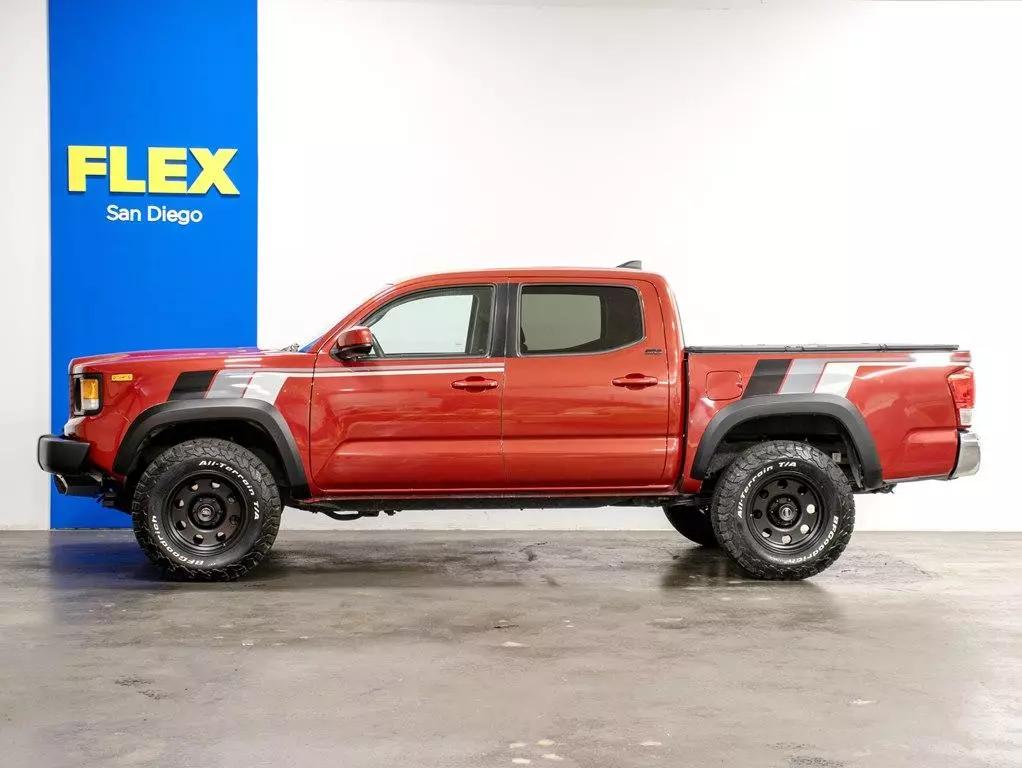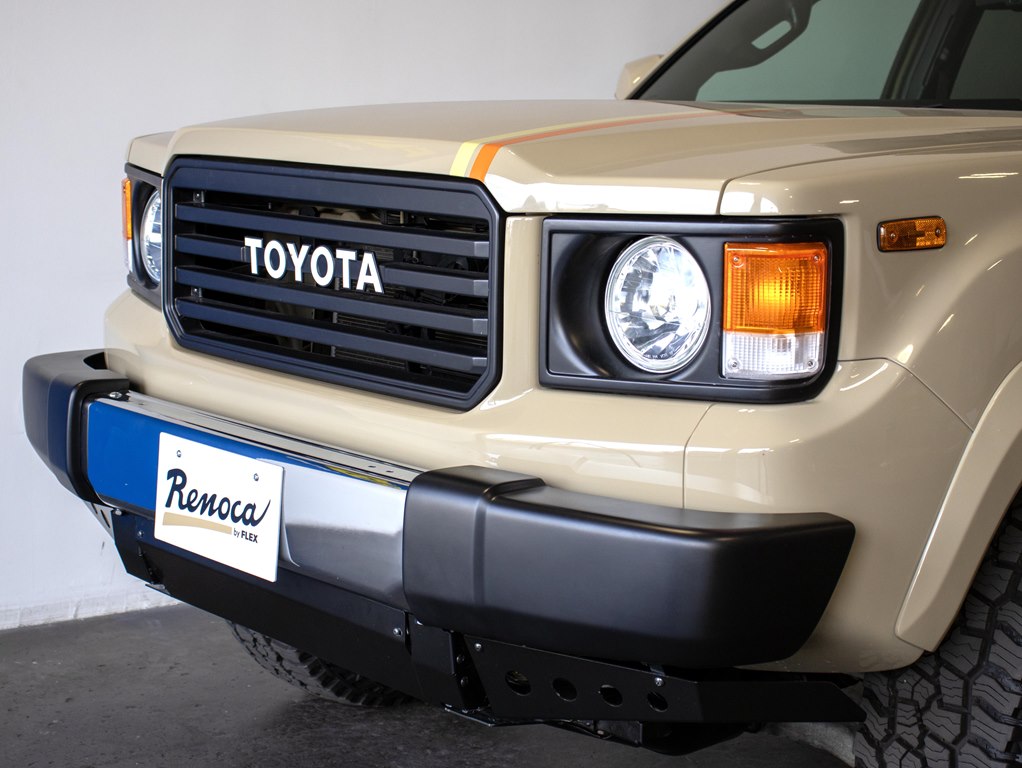Why Choosing the Right Lift Kit Matters
Not all lift kits are created equal, and each serves a different purpose. The right kit for your Tacoma should match both your reason for lifting and your specific year and model. If you’re a serious off-roader, you’ll want a kit that enhances performance—not just one that improves appearance.
Factors to consider: budget, driving style, desired height
With so many lift kits available, you have plenty of options when it comes to price, lift height, and matching your driving style.
Budget considerations include not just the cost of the kit itself, but also installation, potential long-term wear on your Toyota Tacoma’s components, and possible increases in your insurance premiums.
Your driving style also plays a big role. A daily highway commuter will need a different setup than someone tackling rock crawling or overlanding.
Desired lift height matters too; the taller the lift, the more expensive the kit and the greater the strain on suspension and drivetrain parts over time.
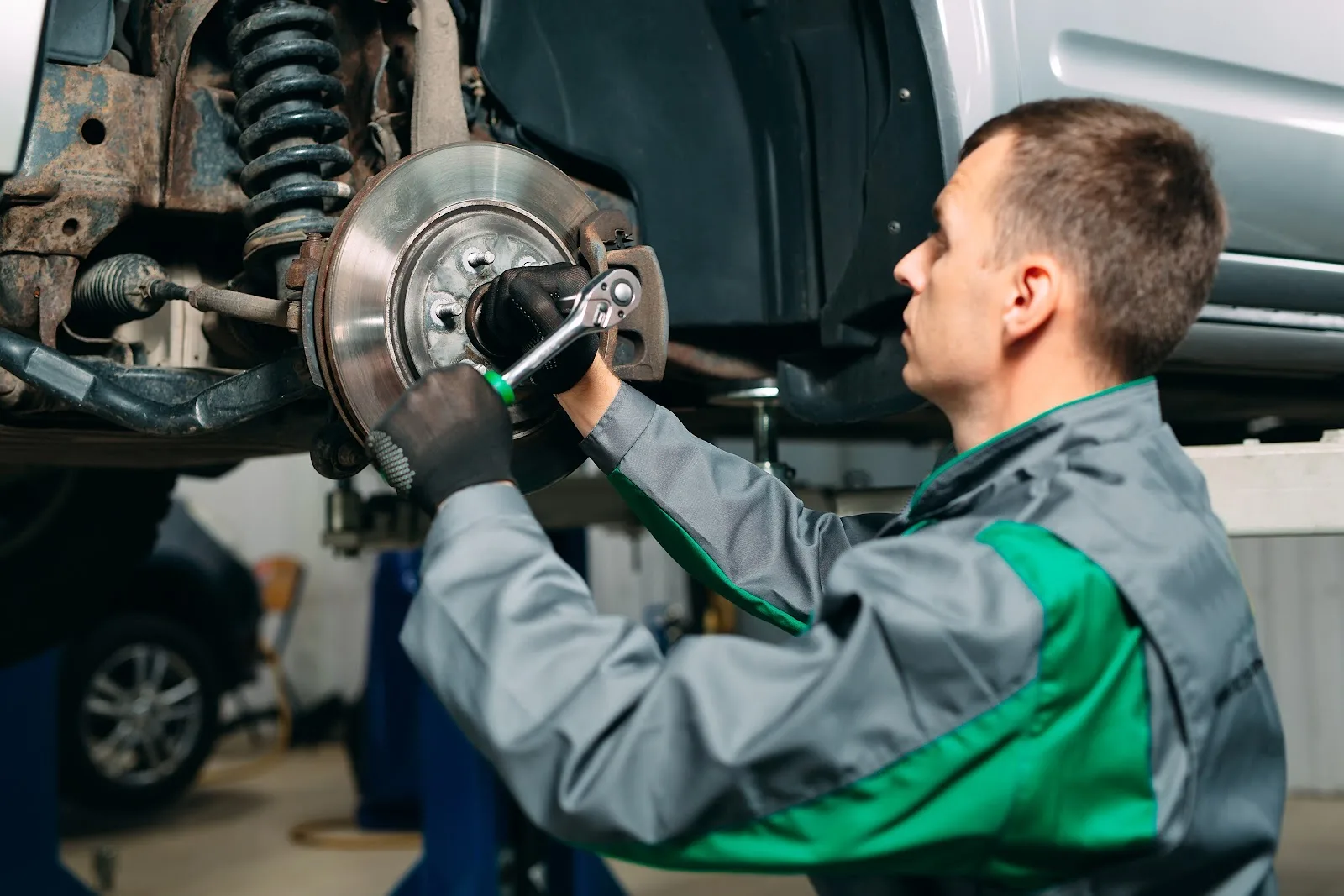
How to Choose a Lift Kit for Your Tacoma
Choosing the right lift kit depends on more than budget, driving style, and height; it’s also about how much you want to invest and your long-term plans. Tacomas are known to last over 300,000 miles, so your kit needs to be as tough as your truck.
Lift height and its impact on ride and performance
Lifting a truck, especially with a suspension lift, affects ride and performance by changing the center of gravity and suspension geometry. This can lead to more body roll, a stiffer or rougher ride, reduced steering precision and longer braking distances. The higher the lift, the more noticeable these effects become.
Ride Quality
- Higher center of gravity – this can make the truck feel less stable and increase the chance of rollover in corners
- Stiffer ride – stiffer springs from suspension lifts lead to a firmer and possibly rougher ride where bumps are noticeable
- Increased wind sensitivity – taller trucks catch more wind, making it harder to handle at highway speeds
Performance Impacts
- Braking – larger, heavier tires commonly installed with a lift require more force to stop, increasing braking distance, and potentially overloading the OEM braking system
- Acceleration – in addition to the bigger tires, the lift itself can slightly reduce acceleration due to increased rotational mass and possibly altered aerodynamics
- Off-road – a lift greatly improves the off-road performance by providing greater ground clearance and better grip from larger tires
Types of lift kits: leveling, spacer, suspension
There are three basic lift kits:
- Leveling – where the front and the back are brought to the same height for aesthetics
- Spacer – raises the body from the frame using blocks or spacers more for cosmetics rather than off-road performance
- Suspension – raises the body by changing the suspension to improve ground clearance, which is perfect for off-roading. This might be the most common lift kit.
Compatibility by model year and trim
Lift kit compatibility depends on your Tacoma’s generation and suspension design. Always check fitment for your specific year and model before buying. Here’s a breakdown of compatibility differences between generations:
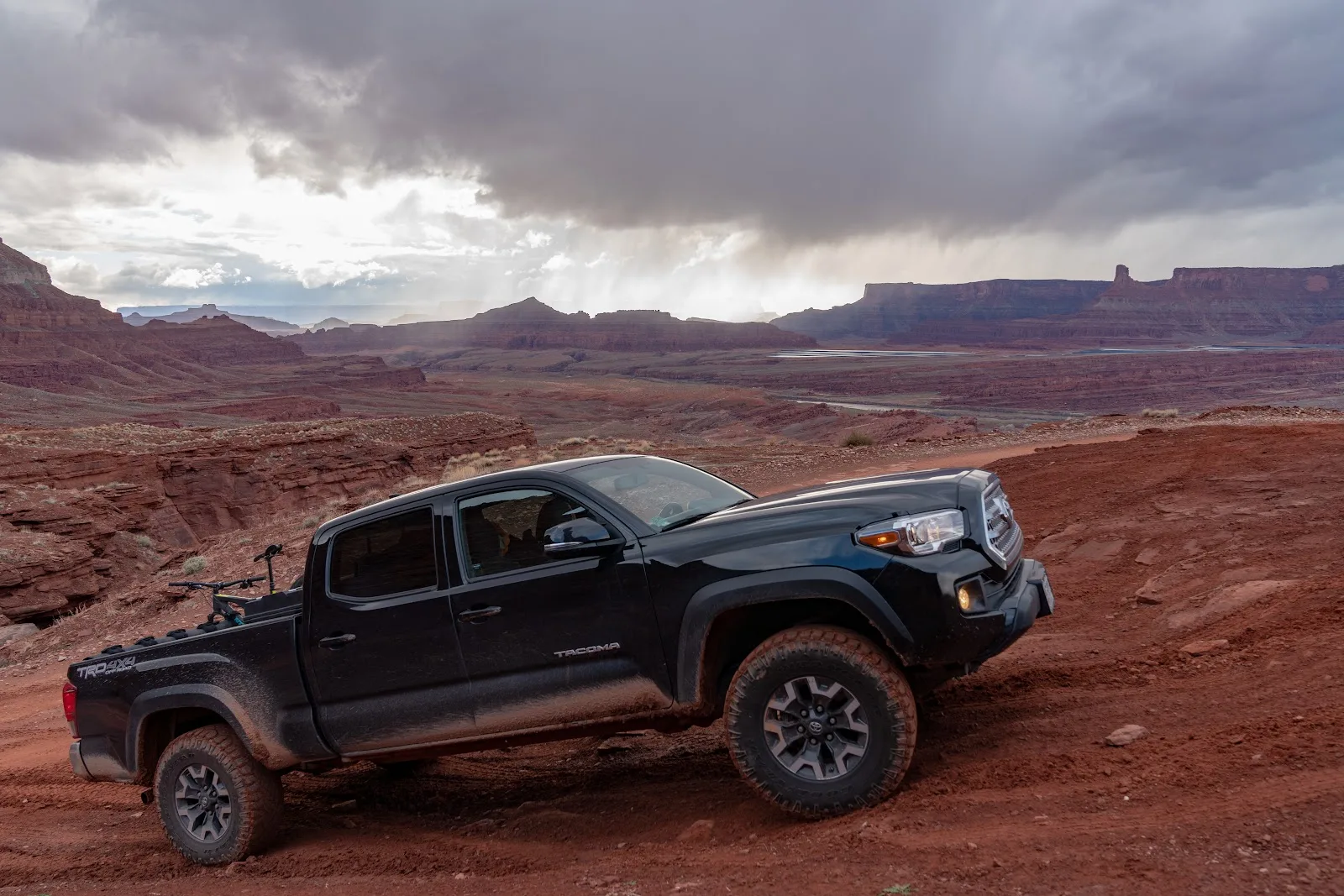
1st Generation (1995-2004)
Suspension: Early 1st gen (95–97 2WD) used torsion bars, while most 1st gen Tacomas (including all 4WD and 1998+ 2WD) use coil-spring double wishbone
Compatibility: Lift kits designed for coilover strut systems, like some Old Man Emu kits, are not directly compatible due to the difference in suspension design.
Recommendation: Look for lift kits specifically engineered for torsion bar suspension systems to ensure proper fit and performance.
2nd, 3rd, & 4th Generations (2005-Present)
Suspension: Utilizes a coilover strut design.
Compatibility: Most lift kits available are designed for this coilover setup.
Important Considerations:
- Verify compatibility with your specific year, model, and trim level (e.g., TRD Sport, TRD Off-Road) to ensure proper fitment.
- Some kits may have specific requirements (e.g., 6 lug only).
- TRD Pro Models: Some lift kits may not be compatible with 2018+ TRD Pro models. TRD Pro models have Fox shocks and different coilover lengths, so kits must either be Pro-specific or replace the full coilover assembly
Factors impacting lift kit choice
- Intended Use: Consider how you plan to use your Tacoma (daily driving, moderate trails, serious off-roading, rock crawling).
- Desired Lift Height: Determine the amount of lift you want (2″, 4″, 6″).
- Ride Quality: Decide if maintaining the factory ride quality is important.
- Tire Size: Factor in the size of tires you plan to use, as larger tires may necessitate a higher lift.
- Budget: Lift kit prices vary significantly, so consider your budget when selecting a kit.
- Modifications: Recognize that a lift kit might require modifications to other components like brake lines, driveshafts, and more.
- Installation: Decide whether you’re comfortable with DIY installation or prefer professional installation, which is recommended for safety and proper alignment.
Recommendations
- Mild Lift/Leveling: A leveling kit or 2-inch lift is often sufficient for moderate trail use or cosmetic improvements.
- Serious Off-roading: Consider a 3-4 inch lift for tackling larger obstacles.
- Extreme Rock Crawling: A 6-inch lift might be necessary for extreme conditions; this will affect stability and fuel economy.
- Prioritize Quality: Start with quality shocks, especially if you’re on a budget, as they significantly impact performance.
- Don’t Ignore the Rear: A proper rear suspension is crucial for balanced performance, particularly when carrying loads.
Caution
Always verify that a lift kit is designed specifically for your Tacoma’s exact year, model, and trim level. Incorrect installation can lead to problems with alignment, handling, and damage your truck.
Street legality and compliance considerations
Thinking about lifting your Tacoma? Before you do, make sure it’s still legal and safe for the street. Here’s a quick breakdown of what to watch for so you don’t run into issues with inspections, insurance, or safety features
| Aspect | Details |
|---|---|
| Federal Laws (FMVSS) | Lift kits must not interfere with brakes, lighting, steering, or airbag systems. Non-compliant kits may void warranties or affect insurance. |
| Toyota Safety Sense (TSS) | Most aftermarket kits disrupt radar and camera calibration. Only OEM kits and select premium options may retain full TSS functionality. |
| Headlight Height Limits | Many states limit headlight height to 54 inches or less. Lifts over 4 inches with larger tires may exceed this. |
| Bumper Height Regulations | States like California, New Jersey, and New York regulate bumper height. Lifts over 3 inches may require inspection or be restricted. |
| State-Specific Lift Limits | Varies by state: • California – Max 5″ frame height increase • Florida – Max 5″ suspension lift under 5,000 lbs • Pennsylvania/New York – Often limited to 4″ |
| Lighting and Visibility | Headlights and taillights must remain within legal height and be correctly aimed. |
| Airbag and Crash Safety | Excessive lift can affect crash sensors and airbag timing. Engineered kits reduce this risk compared to budget kits. |
| Speedometer and ABS Calibration | Larger tires require recalibration to maintain accurate speedometer readings and proper ABS function. |
| Insurance Coverage | Inform your insurer of any modifications. Factory or professionally installed kits are more likely to be covered. |
| Emissions Compliance | Lift kits do not directly affect emissions, but larger tires and drivetrain changes can impact readiness monitors. |
| Inspection and Registration | Some states require re-inspection or documentation after lifting. Proof of headlight aiming and alignment may be needed. |
General Best Practices
| Recommendation | Reason |
|---|---|
| Stay under 3″ of total lift | Avoids most state compliance issues and minimizes mechanical complications |
| Use kits that retain TSS compatibility | Maintains key safety features and avoids dashboard errors |
| Recalibrate speedometer and alignment | Ensures accurate data and proper handling post-lift |
| Retain installation documentation | Useful for inspections, resale, and insurance verification |
| Check local DMV/DOT laws | State regulations vary widely and may impact what’s street legal |
Lift Kit Types and Compliance Risk (Tacoma)
| Lift Type | Compliance Risk | Notes |
|---|---|---|
| Toyota TRD Lift Kit | Low | OEM kit, fully TSS and warranty compliant |
| Bilstein 6112/5160 | Low to Medium | Street legal with proper alignment and installation |
| Westcott Designs | Low | Designed to retain TSS in most configurations |
| Spacer Lift Kits | High | Often disrupt suspension geometry and safety systems |
| Body Lifts over 1.5″ | Medium to High | May affect bumper and light height legality |
| Extreme 6″+ Lift Kits | High | Not street legal in most states; intended for off-road or show use |
Best Budget Kits (Under $300)
If you’re lifting on a budget, we’ve compiled a list of top picks under $300 that offer solid performance for every day driving and mild off-road use.
Rough Country Leveling Kit (2″)
The Rough Country 2” leveling kit is a simple and affordable front spacer lift designed to level out your Tacoma’s stance. It’s a popular choice for those looking to eliminate the factory rake without diving into a full suspension upgrade. Installation is straightforward and typically takes just a couple of hours, with many DIYers completing it at home. Once installed, it gives the truck a more aggressive look without significantly altering the ride quality.
While it’s not built for serious off-roading or heavy loads, it’s a good entry-level choice if you’re after looks over hardcore performance.
| Feature | Thoughts |
|---|---|
| Ride Quality | Smooth and virtually unchanged from stock |
| Off-Road Capability | Minimal – spacers don’t increase suspension travel |
| Build and Value | Cheap and light, but not ideal for long-term use |
| Ideal Use Case | Cosmetic front lift and light-duty driving |
ReadyLIFT 2.25” Spacer Kit
The ReadyLIFT 2.25″ Spacer Kit is a simple and affordable way to level out your Tacoma and fit slightly bigger tires, up to 32″. Most people say the ride feels just like stock, and it’s easy to install at home.
That said it’s not a real suspension upgrade. It doesn’t add any travel and can put extra stress on components if you’re doing more than just street driving or mild trails. For light-duty use and looks, it’s a solid option. But if you’re after better off-road performance or long-term durability, buy a shock-based lift.
According to TacomaWorld.com readers, most users report the ride quality stays very close to stock: “ride did not change at all in quality” and alignment tends to drift over time, leading to tire cupping if not monitored.
| Feature | Thoughts |
|---|---|
| 2.25″ Front Lift (Spacer Design) | Levels the truck for a more aggressive stance and clears up to 32″ tires. No rear lift included. |
| Bolt-On Installation | Easy DIY job with basic tools. No spring compressor needed. Great for first-time modders. |
| Maintains Factory Ride Quality | Most owners report little to no change in on-road comfort or handling. Feels like stock. |
| Alignment Required After Install | Skipping this step can cause uneven tire wear or cupping over time. |
| No Added Suspension Travel | Doesn’t improve off-road capability—mainly a cosmetic lift. Suspension geometry stays stock. |
| Low Cost | Budget-friendly way to level the truck without jumping into full suspension upgrades. |
| Long-Term Durability | Fine for daily driving, but not ideal under frequent off-road articulation or heavy loads. |
| Compatibility | Designed for 6-lug Tacomas (2005–2023). Be sure to check fitment for your exact trim. |
Ideal for: DIYers, light off-roaders, aesthetic upgrades
These kits are best for those who are not ready to hit the trails other than a jaunt to a cabin on the lake or just want a rugged looking truck without all of the hardware of off-roading.

Best Mid-Range Kits ($300–$800)
Mid-range kits give you better ride quality, handling, and off-road performance without going overboard on price. Most come with upgraded shocks or coilovers, making them a solid pick for daily driving and weekend trail runs.
ToyTec Boss Suspension Kit (2.5”–3″)
The ToyTec BOSS Suspension Kit is a strong mid-range option for Tacoma owners wanting 2.5″–3″ of lift without sacrificing comfort. It’s ideal for those who want better road manners, mild trail capability, and room for bigger tires.
Most owners and Tacoma World readers report a smooth, near-stock ride with improved stance and tire clearance. The kit levels the truck nicely while still riding comfortably on-road and offering better off-road control. Some users mentioned minor quirks like occasional noises under compression, but nothing deal-breaking. There were also isolated safety concerns with earlier Aluma 2.0 coilovers, though those issues appear to have been addressed in newer versions.
| Feature | Thoughts |
|---|---|
| 2.5″–3″ Adjustable Front Lift | Gives noticeable height without maxing out, perfect for bigger tires and added ground clearance |
| Aluma Series Coilovers & Shocks | Hard-anodized aluminum build, rebuildable, nitrogen-charged design for consistent performance |
| Rear Add-a-Leaf & Diff Drop | Improves stability and pinion angle for lifted setups and heavier loads |
| Bolt-On Install (No Spring Compressor) | User-friendly install—mostly DIY-able, though UCAs are required too |
| Ride Quality | Smooth and composed on-road; off-road performance improves without compromising comfort |
| Off-Road Capability | Handles mild trails and washboard roads well; not intended for hardcore rock crawling |
Fabtech Basic System
The Fabtech 6″ Basic Lift System gives a noticeable height gain by utilizing coilover shock spacers up front and rear shock extensions, along with heavy-duty knuckles and crossmember reinforcement. But be clear: this is more about style and clearance than ride comfort. Expect a bouncy, firm feel not suited for long drives or aggressive off-roading.
Feedback from overlanding forums shows a mixed reception. While some users say it “handles okay” after installation, many others describe the ride as harsh, stiff, and jarring—especially on pavement. A few owners reported that Fabtech’s shocks degraded quickly, leading to poor ride quality and bounce. One user noted that large lift amounts and drop-bracket designs on IFS trucks amplified these issues and made the build feel more “show truck” than trail rig.
| Feature | Thoughts |
|---|---|
| 6″ Front Lift Height | Big visual upgrade and added tire clearance, but can negatively affect geometry and ride comfort. |
| Coilover Spacers (Front) | Reuses factory coilovers—easy install, but limits suspension performance. |
| Rear Lift Blocks & Extended Shocks | Simple setup, but not ideal for heavy loads or off-road flex. Ride can feel bouncy or stiff. |
| Drop Crossmembers & Knuckles | Reinforces geometry, but adds weight and complexity; common in show-style builds. |
| No Upper Control Arms Included | UCAs recommended for proper alignment and handling; not included in the basic system. |
| Bolt-On Installation | Designed for easy install, but requires cutting and possibly welding depending on application. |
| Ride Quality | Often reported as harsh, especially on pavement. Shocks tend to wear quickly under normal use. |
| Off-Road Capability | Minimal—geared more toward street trucks or aesthetic lifts than performance or trail use. |
| Ideal For | Show trucks, street builds, or those just wanting height—not ideal for overlanding or rough trails. |
Ideal for: moderate off-roading, improved ride quality
These mid-range kits are a great step up if you want better ride quality and off-road performance without going all-in on a high-end setup. They’re perfect for daily driving, weekend trails, and anyone ready to move beyond basic spacers for something that actually rides and handles better.
Best Premium Kits ($800 and up)
Premium lift kits are built for serious performance and usually include high-end coilovers, remote reservoir shocks, and upgraded control arms for better suspension travel, damping, and long-term durability. If you’re into rock crawling, overlanding, or just want the best ride quality possible, these are the kits worth investing in. They’re not cheap, but the difference in handling, comfort, and capability is huge.
ICON Vehicle Dynamics Stage 2
The ICON Stage 2 kit is a standout choice if you’re after a premium lift that balances street manners with off-road performance. It delivers quieter road rides, more travel, and better control under load thanks to high-end shocks, coilovers, UCA geometry correction, and progressive rear springs.
On Reddit and Tacoma forums, users often praise ICON for its smooth ride and solid off-road control. One user noted, “Icon shocks absorb every little bump and are super smooth,” and capped off a 60 mph off-road run with impressive comfort. Some others reported a bouncy feeling at low speeds—typical of digressive damping setups—though it’s not universal and can often be dialed in after break-in. Overall sentiment: clean, high-quality build with few major complaints.
| Feature | Details |
|---|---|
| Adjustable Front Lift (1.25–3″) | Uses ICON 2.5 EXP coilovers with internals designed to maintain suspension travel and clearance |
| Rear Lift & Springs | 1.5″ rear lift from triple-rate progressive leaf pack balances ride comfort and load resistance |
| Tubular Upper Control Arms | ICON’s UCA system includes Delta Joint PRO for full bump and droop travel with corrected geometry and added caster |
| Premium Shocks | Internal reservoir ICON 2.0 shocks tuned specifically for Tacoma offer superior damping and cooling under load |
| Built Quality | CNC-machined 6061 aircraft-grade aluminum components are strong, lightweight, and corrosion-resistant. FK rod-end bearings add |
| Bolt-On Install | No cutting or welding—mostly bolt-in install with included differential drop brackets for 4WD models—plus UCA alignment for longevity |
Old Man Emu BP-51 Performance Kit
The Old Man Emu BP-51 kit is a solid choice for Tacoma owners who want both daily comfort and serious off-road performance. The internal bypass shocks and remote reservoirs handle rough terrain well, and the adjustability lets you fine-tune the ride to your liking. It’s especially good for overlanders or anyone carrying extra weight, but the smooth on-road feel makes it just as useful for everyday driving.
Owners and forum users often highlight the BP-51 kit for its impressive balance of on-road comfort and off-road performance. The shocks are praised for absorbing bumps effectively while maintaining strong control on rough or fast dirt roads. One Reddit user summed it up as offering “lots of control on rough roads and fast dirt roads.” Many drivers also appreciate the ability to fine-tune rebound and compression, noting that small adjustments can significantly improve ride quality and stability in both daily driving and off-road conditions.
| Feature | Thoughts |
|---|---|
| ~2″ Front Lift & Rear Lift Options | Adds moderate height while supporting added gear weight without sagging |
| BP-51 Internal Bypass Shocks | 51 mm big-bore aluminum shocks with internal bypass, offering 10 levels of compression and rebound adjustability for fine-tuned comfort and control |
| Remote Reservoir Design | Helps dissipate heat during extended use and heavy loads |
| Rear Dakar Leaf Springs | Optional light or heavy-duty packs for up to 2.5–3″ of rear lift, designed to handle added cargo gracefully |
| Tunable Suspension | Users emphasize how small adjustment tweaks dramatically improve road comfort and off-road balance |
Ideal for: serious off-roaders, maximum durability
Serious trail use calls for serious lift kits, built for those who want top-tier suspension performance. These kits offer maximum durability, adjustability, and comfort. It’s a significant investment, but one that delivers every time you conquer tough terrain or reach a new summit.
Optional Upgrades and Add-Ons
We’ve put together some extras to consider when adding more than 2-inches of height to your Tacoma.
Upper control arms, shocks, brake line extenders
| Upgrade | Why It’s Useful |
|---|---|
| Upper Control Arms (UCAs) | Corrects suspension geometry, improves alignment range, and allows full travel on lifted setups. Essential for lifts over 2″. |
| Extended Brake Lines | Prevents brake lines from stretching or binding under full droop. Recommended for 3”+ lifts or long-travel setups. |
| Rear Add-a-Leaf or Leaf Packs | Helps support extra weight and prevents sagging in the rear. Great for overlanders or trucks that haul gear. |
| Differential Drop Kit | Reduces CV axle angles in front IFS setups, helping prevent wear or failure on lifted trucks. |
| Longer Shocks or Coilovers | Required if your new lift increases suspension travel beyond stock shock limits. Prevents topping/bottoming out. |
| Bump Stop Extensions | Protects components by preventing over-compression of shocks and springs under extreme articulation. |
| Sway Bar Relocation Brackets | Keeps sway bar in proper alignment with new suspension geometry. Helps maintain handling and stability. |
| Adjustable Panhard/Track Bar (for solid axles) | Centers the rear axle after lifting. Common in 4Runner/Tundra builds with more than 2″ rear lift. |
| Taller Bump Stops | Required in some lifts to prevent tire rub or damage at full compression. |
| Re-Gearing (for large tires) | Optional but recommended when running 33”+ tires. Restores power, fuel economy, and shift points. |
Recommendations based on lift height
| Lift Height | Recommended Upgrades | Notes |
|---|---|---|
| Up to 1.5″ | None required for most setups | Good for leveling kits or mild spacers. Stock geometry and components usually remain within safe limits. |
| 1.5″–2.5″ | • Upper Control Arms (recommended) • Alignment check • Optional: Differential drop (IFS), extended rear shocks | UCA upgrade improves caster and travel. CV angles start to stress slightly—diff drop helps. Ride quality and alignment may suffer without upgrades. |
| 2.5″–3″ | • Upper Control Arms (required) • Differential drop (IFS) • Extended shocks or coilovers • Add-a-leaf or rear springs (if lifting rear) • Alignment + sway bar adjustment | Most full suspension kits fall in this range. Important to upgrade UCAs for proper geometry. Rear components need to match front lift for balance. |
| 3″–4″ | • All of the above • Extended brake lines • Bump stop extensions • Driveshaft inspection (possible vibration) • Optional: Panhard bar or track bar (rear axle centering) | At this height, you’re pushing factory tolerances. Brake lines and driveline angles must be checked. Consider long-travel shock options. |
| 4″+ | • All of the above • Re-gearing (for 33”+ tires) • Long-travel or drop bracket suspension • HD steering components • Full alignment and possible frame mods | High-lift builds are serious. Geometry correction, driveline tuning, and stronger components become critical. Ideal for off-road rigs or show trucks—not recommended for casual daily drivers. |
Installation Tips and Considerations
Installing a lift kit isn’t overly complicated, but there are a few key things to keep in mind to make the process smoother and safer.
- Read the instructions first – Every kit is different, and skipping the manual can lead to missed steps or incorrect torque settings.
- Get an alignment afterward – A post-install alignment is a must to avoid tire wear and steering issues, especially if UCAs were added.
- Use jack stands and proper safety gear – Never rely on just a floor jack; always support the truck securely.
- Re-torque bolts after 500 miles – Suspension components can settle, so double-check all fasteners once things break in.
- Check CV axle angles – On IFS trucks, anything over 2″ of lift can stress the CVs. Consider a diff drop to correct the angle.
- Grease all fittings – If your kit includes greasable UCAs, leaf shackles, or bushings, lube them up during and after install.
- Build in stages if needed – Unsure about going full lift at once? Start with a front level or small lift, then upgrade as needed.
- Plan for tire clearance – Lifting doesn’t always mean tires will fit. You may still need to trim liners or mud flaps when upsizing.
- Watch brake lines and ABS wires – Make sure they’re not stretched at full droop. Relocate brackets or extend lines if needed.
- Have a buddy help – Coilovers, leaf springs, and UCAs can be heavy and awkward to install solo; an extra set of hands makes a big difference.
DIY vs Professional Installation
Choosing between DIY and professional installation depends on your tools, skills, and comfort level with suspension work. Here’s a breakdown of both options:
DIY vs Professional Installation
| Option | Pros | Cons | Best For |
|---|---|---|---|
| DIY Installation |
|
|
Experienced DIYers with the tools and time to handle the job, or those who enjoy learning through hands-on work. |
| Professional Installation |
|
|
Those without the tools, space, or confidence to do it themselves, or anyone installing a more complex lift system. |
Tip: If you’re on the fence, our experienced Tacoma experts are happy to answer your questions.
Post-installation alignment and inspection
Alignment
Why it matters: Lifting alters suspension geometry, affecting toe, camber, and caster angles. Without alignment, you risk uneven tire wear, poor handling, and reduced fuel efficiency.
What to check: Ensure all wheels are properly aligned. Some kits require aftermarket upper control arms to achieve correct alignment specs.
When to align: Get an alignment immediately after installation and again after a short break-in period (typically 500–1,000 miles) to catch any settling or shift in components.
Inspection
- Suspension Components: Check torque on all bolts; especially control arms, shock mounts, and sway bar links.
- Brake Lines: Inspect for tension or stretching. Extended brake lines may be needed for lifts over 2–3 inches.
- CV Axles and Driveshafts: Look for unusual angles or vibrations. Excessive angles can lead to premature wear.
- Tires: Ensure proper clearance and check for rubbing, especially at full lock or during suspension articulation.
- Headlight Aim: Lifted vehicles often require headlight adjustment to stay within legal and safe aiming limits.
Tip: Regularly inspect your suspension after lifting, especially if you off-road often. Re-torque bolts and monitor for signs of wear or unusual noises.

Conclusion: Find the Best Kit for Your Needs and Budget
The right lift kit for your Tacoma depends on how you plan to use your truck, your budget, and your long-term goals. Whether you’re looking for a mild leveling kit for daily driving, a mid-range suspension upgrade for weekend trails, or a premium system for serious off-road adventures, there’s a kit that fits your needs.
Consider the total cost, including installation, potential upgrades like control arms, and long-term maintenance. Think about ride quality, off-road performance, and how much lift you really need. By balancing performance, cost, and durability, you can choose a kit that enhances your Tacoma without compromising safety or reliability.
Flex carries an inventory of Tacomas that have already been lifted like the Windansea Renoca Tacoma. The Renoca is a blend of the old retro look with all of the modern conveniences, and if you don’t see what you’re looking for, let us build it for you. Contact us for more information.


